Yasser Al-Eryani
Alternating Channel Estimation and Prediction for Cell-Free mMIMO with Channel Aging: A Deep Learning Based Scheme
Apr 16, 2022
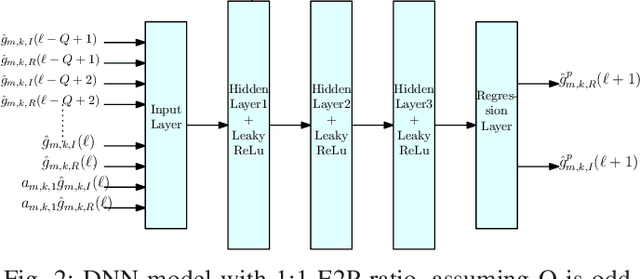
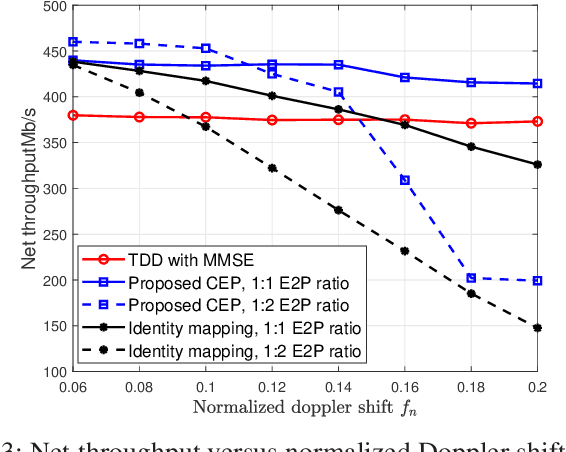
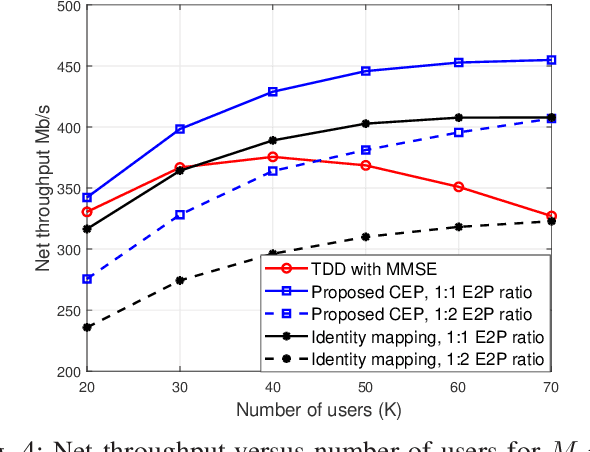
Abstract:In large scale dynamic wireless networks, the amount of overhead caused by channel estimation (CE) is becoming one of the main performance bottlenecks. This is due to the large number users whose channels should be estimated, the user mobility, and the rapid channel change caused by the usage of the high-frequency spectrum (e.g. millimeter wave). In this work, we propose a new hybrid channel estimation/prediction (CEP) scheme to reduce overhead in time-division duplex (TDD) wireless cell-free massive multiple-input-multiple-output (mMIMO) systems. The scheme proposes sending a pilot signal from each user only once in a given number (window) of coherence intervals (CIs). Then minimum mean-square error (MMSE) estimation is used to estimate the channel of this CI, while a deep neural network (DNN) is used to predict the channels of the remaining CIs in the window. The DNN exploits the temporal correlation between the consecutive CIs and the received pilot signals to improve the channel prediction accuracy. By doing so, CE overhead is reduced by at least 50 percent at the expense of negligible CE error for practical user mobility settings. Consequently, the proposed CEP scheme improves the spectral efficiency compared to the conventional MMSE CE approach, especially when the number of users is large, which is demonstrated numerically.
Self-Organizing mmWave MIMO Cell-Free Networks With Hybrid Beamforming: A Hierarchical DRL-Based Design
Mar 17, 2021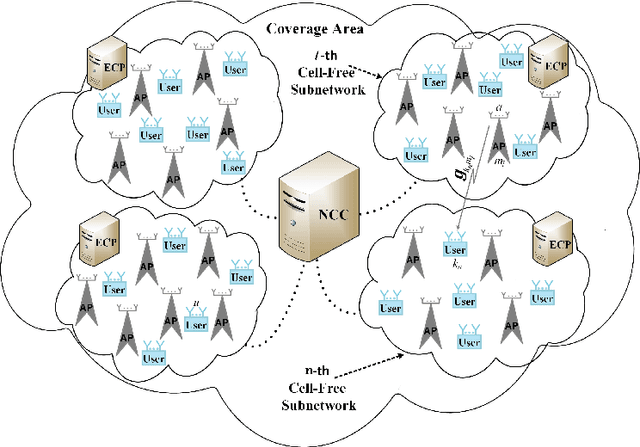


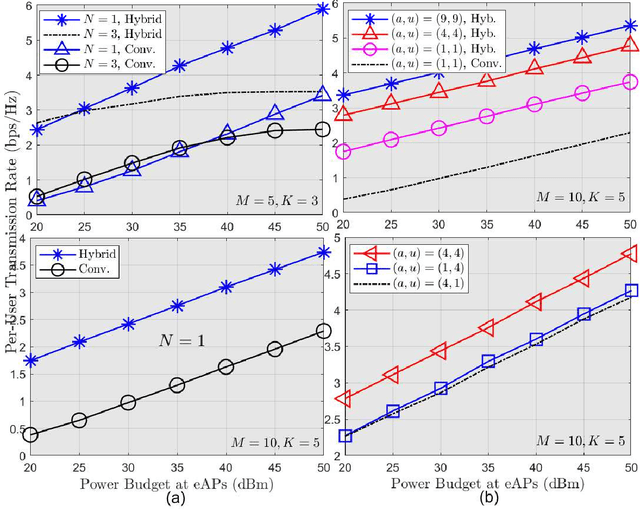
Abstract:In a cell-free wireless network, distributed access points (APs) jointly serve all user equipments (UEs) within the their coverage area by using the same time/frequency resources. In this paper, we develop a novel downlink cell-free multiple-input multiple-output (MIMO) millimeter wave (mmWave) network architecture that enables all APs and UEs to dynamically self-partition into a set of independent cell-free subnetworks in a time-slot basis. For this, we propose several network partitioning algorithms based on deep reinforcement learning (DRL). Furthermore, to mitigate interference between different cell-free subnetworks, we develop a novel hybrid analog beamsteering-digital beamforming model that zero-forces interference among cell-free subnetworks and at the same time maximizes the instantaneous sum-rate of all UEs within each subnetwork. Specifically, the hybrid beamforming model is implemented by using a novel mixed DRL-convex optimization method in which analog beamsteering between APs and UEs is conducted based on DRL while digital beamforming is modeled and solved as a convex optimization problem. The DRL models for network clustering and hybrid beamsteering are combined into a single hierarchical DRL design that enables exchange of DRL agents' experiences during both network training and operation. We also benchmark the performance of DRL models for clustering and beamsteering in terms of network performance, convergence rate, and computational complexity.
Distributed Uplink Beamforming in Cell-Free Networks Using Deep Reinforcement Learning
Jun 26, 2020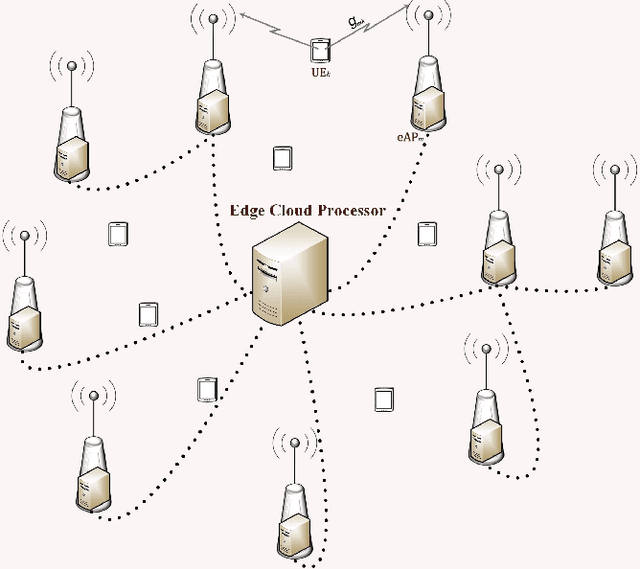
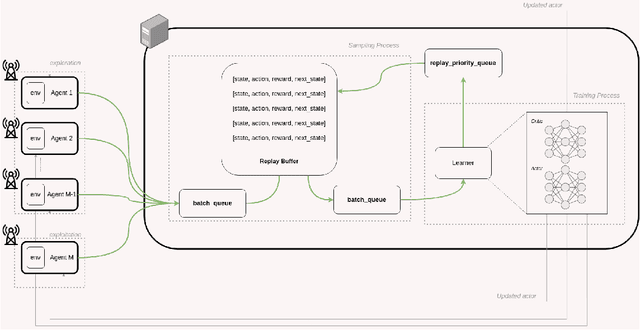
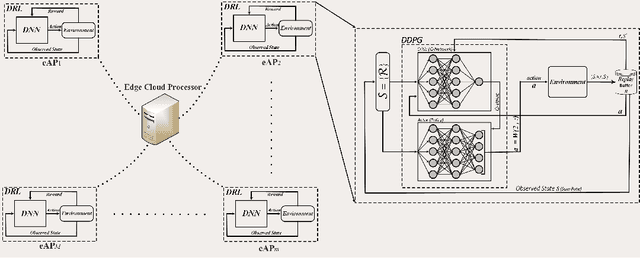
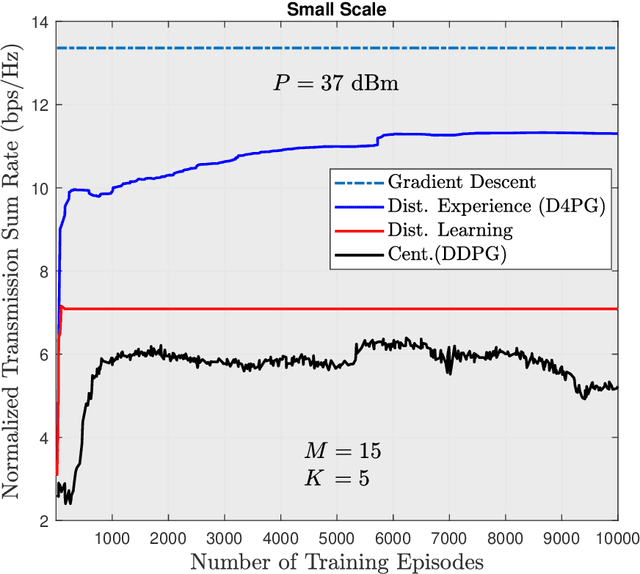
Abstract:The emergence of new wireless technologies together with the requirement of massive connectivity results in several technical issues such as excessive interference, high computational demand for signal processing, and lengthy processing delays. In this work, we propose several beamforming techniques for an uplink cell-free network with centralized, semi-distributed, and fully distributed processing, all based on deep reinforcement learning (DRL). First, we propose a fully centralized beamforming method that uses the deep deterministic policy gradient algorithm (DDPG) with continuous space. We then enhance this method by enabling distributed experience at access points (AP). Indeed, we develop a beamforming scheme that uses the distributed distributional deterministic policy gradients algorithm (D4PG) with the APs representing the distributed agents. Finally, to decrease the computational complexity, we propose a fully distributed beamforming scheme that divides the beamforming computations among APs. The results show that the D4PG scheme with distributed experience achieves the best performance irrespective of the network size. Furthermore, the proposed distributed beamforming technique performs better than the DDPG algorithm with centralized learning only for small-scale networks. The performance superiority of the DDPG model becomes more evident as the number of APs and/or users increases. Moreover, during the operation stage, all DRL models demonstrate a significantly shorter processing time than that of the conventional gradient descent (GD) solution.
Multiple Access in Dynamic Cell-Free Networks: Outage Performance and Deep Reinforcement Learning-Based Design
Feb 24, 2020
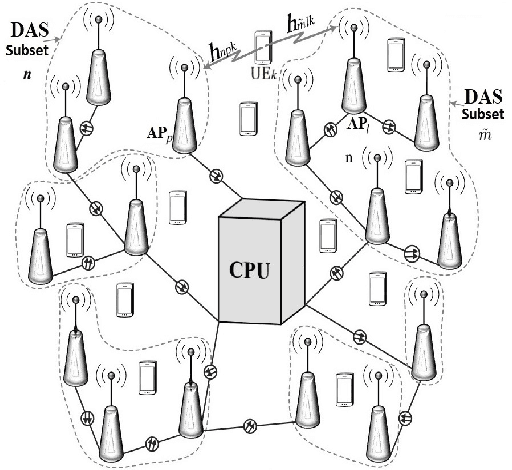


Abstract:In future cell-free (or cell-less) wireless networks, a large number of devices in a geographical area will be served simultaneously in non-orthogonal multiple access scenarios by a large number of distributed access points (APs), which coordinate with a centralized processing pool. For such a centralized cell-free network with static predefined beamforming design, we first derive a closed-form expression of the uplink per-user probability of outage. To significantly reduce the complexity of joint processing of users' signals in presence of a large number of devices and APs, we propose a novel dynamic cell-free network architecture. In this architecture, the distributed APs are partitioned (i.e. clustered) among a set of subgroups with each subgroup acting as a virtual AP equipped with a distributed antenna system (DAS). The conventional static cell-free network is a special case of this dynamic cell-free network when the cluster size is one. For this dynamic cell-free network, we propose a successive interference cancellation (SIC)-enabled signal detection method and an inter-user-interference (IUI)-aware DAS's receive diversity combining scheme. We then formulate the general problem of clustering APs and designing the beamforming vectors with an objective to maximizing the sum rate or maximizing the minimum rate. To this end, we propose a hybrid deep reinforcement learning (DRL) model, namely, a deep deterministic policy gradient (DDPG)-deep double Q-network (DDQN) model, to solve the optimization problem for online implementation with low complexity. The DRL model for sum-rate optimization significantly outperforms that for maximizing the minimum rate in terms of average per-user rate performance. Also, in our system setting, the proposed DDPG-DDQN scheme is found to achieve around $78\%$ of the rate achievable through an exhaustive search-based design.
 Add to Chrome
Add to Chrome Add to Firefox
Add to Firefox Add to Edge
Add to Edge